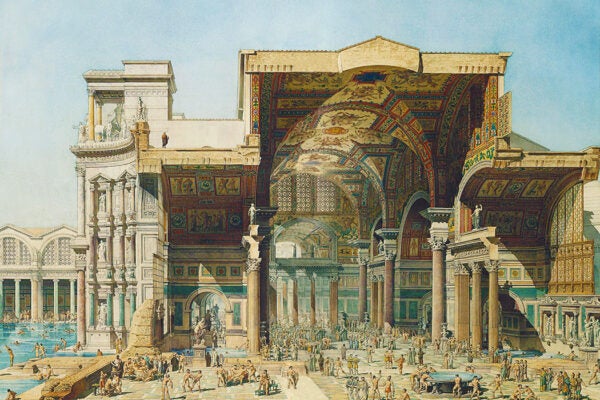“Bury a potato,” boasts a character in Terry Pratchett’s novel Making Money, “and in due season you could be looking at a dividend of a thousand per cent.” The acerbic reply: “Can I assume for a moment that you don’t intend to put us on the potato standard?”
In the novel, the proposal to base the economy on a staple crop may offer food for thought. Unfortunately, the experience of Japan in the late Tokugawa period also suggests it’s a recipe for disaster.
“Although the period being a feudal period whose economy was one of ‘rice economy,’ it was marked by the wide extension of money as the medium of exchange and by the rapid rise of commoners,” the pioneering historian Eijiro Honjo explains in a 1931 article from the Kyoto University Economic Review.
The co-existence of economies that were based on rice and money created a “paradoxical economic organisation,” which Honjo argues was the main problem for the final shogunate’s finances. During this period, which stretched from the seventeenth to nineteenth century, Japan was run by a form of military government led by the powerful Tokugawa dynasty. The key quirk of its economic structure was a system where “taxes were expressed and paid in terms of rice, and largely paid in the grain itself” to the authorities. At the same time, rice had to be exchanged for money to make payments and carry out other transactions.
“[T]his necessity had dire effects upon the finance of the samurai class; for it was clear that fluctuations in the price of rice was inevitably accompanied by fluctuations in the amount of the revenue calculated in money,” writes Honjo, who was one of the earliest modern scholars to study Japan’s economic history.
Despite the emergence of wealthy commoners from the commercial and industrial classes, Tokugawa society remained a feudal system that was economically dependent on agriculture. In fact, it was the government’s policy to keep the price of rice high, in order to support the samurai class and the daimyos, or feudal lords. But a high rice price tended to be a symptom of other problems, since it was usually the result of crop failures—which meant “a small amount of rice revenue” for the shogunate, at the end of the day.
“Moreover, the government had to spend much money in the relief of poverty-stricken farmers and had to adopt various measures for the purpose of adjusting the price of rice,” Honjo notes. “Thus, the prevalence of a high price of rice did not benefit the treasury of the feudal government.”
On the other hand, a bumper rice harvest would bring down the exchange value of rice in monetary terms, and “a depreciation in the price of rice ipso facto was bound to affect the public treasury unfavourably” as well.
Unlike with national budgets today, where funds are raised to support spending needs, the Tokugawa government carried out its fiscal planning with the expectation that its expenses would be determined by revenue. But government expenditure was increasing beyond what the variable rice revenue could sustain—especially from the 1830s onward, as foreign relations deteriorated and Japan had to shore up military defenses. The government frequently had to resort to re-coinage, or a practice of minting new currency. It also leaned on wealthy commoners to make “patriotic” loans—which were not necessarily going to be repaid, either!
Weekly Newsletter
“[The shogunate] could no longer stand on its own bottom, and was obliged to trust in the development of a money economy which was inconsistent with its own economic foundation, for the improvement of its financial lot,” writes Honjo, adding that this system led to “financial misery” for the government.
By 1868, the shogunate’s rule had ended, and power was returned to the emperor in the Meiji Restoration. Many other factors had put the Tokugawa shogunate under financial strain—for example, crop failures, lower gold and silver production, and government corruption. Still, Honjo concludes, “the greatest and fundamental cause is to be found in the social economic system of the time.”







